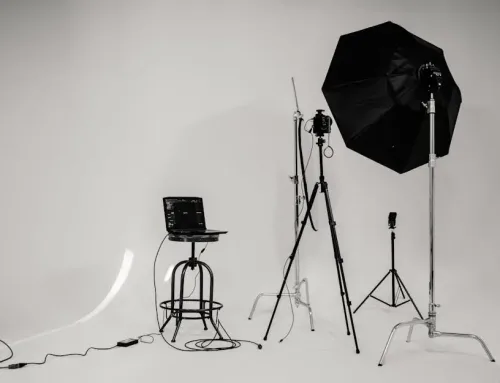 As we step into 2023, the world of commercial photography is witnessing transformative trends that are changing the way photographers capture and communicate visual stories. In this dynamic industry, staying informed of what’s hot and happening is key for photographers looking to remain ahead of the curve. Let’s dive into the top trends shaping commercial photography this year.
As we step into 2023, the world of commercial photography is witnessing transformative trends that are changing the way photographers capture and communicate visual stories. In this dynamic industry, staying informed of what’s hot and happening is key for photographers looking to remain ahead of the curve. Let’s dive into the top trends shaping commercial photography this year.
1. The Rise of Authentic Imagery
In today’s digital world, authenticity is key. More brands are opting for genuine, relatable images that reflect real emotions and situations. This trend encourages photographers to capture moments that audiences can truly connect with. Authentic imagery is about storytelling, capturing the essence of the moment rather than staging it. It’s about making connections through visuals that evoke emotion, and this approach is proving vital in today’s saturated market, where audience retention is crucial.
There’s a growing shift towards showcasing real-life diversity and imperfections, rejecting overly polished or perfect images. Brands now want to convey honesty and genuineness in their marketing efforts, and this means including a mix of ethnicities and body types in their campaigns. This aligns with society’s increasing demand for diversity in visual art, making commercial photography more inclusive and real.
2. Sustainability in Visual Storytelling
As sustainability becomes a global focus, commercial photographers are incorporating eco-friendly themes and practices. This trend not only relates to content but also involves using sustainable equipment and methodologies in shoots. Photographers are increasingly choosing biodegradable or recyclable materials and sustainable lighting solutions. Additionally, there’s a move towards digital props and sets, minimizing the environmental footprint of photo shoots.
Brands that prioritize eco-consciousness in their stories are more likely to resonate with consumers who are becoming more environmentally aware. Photographers focusing on sustainability are showcasing green aesthetic elements and aligning with brands’ values which promote environmental responsibility. This shift is not only ethical but is also becoming a profitable strategy in commercial photography.
3. The Impact of AI in Photography
Advancements in artificial intelligence are revolutionizing photography, offering new tools for editing and shooting. AI technology enhances image quality while providing photographers with more time for creativity. Automated editing software can now identify and correct imperfections faster than ever, allowing photographers to deliver higher quality work with less manual effort.
Additionally, AI-driven cameras are emerging, capable of detecting scenes and adjusting settings instantly, enabling photographers to concentrate on engaging with their subjects. This technology is helping create smarter workflows and improve efficiency, which is crucial given the competitive nature of commercial photography today. Photographers who embrace these tools can focus more on their creativity, resulting in more innovative and captivating projects.
4. The Allure of Drone Photography
Drone technology continues to soar in popularity, providing breathtaking aerial perspectives that were once difficult to obtain. This trend allows photographers to capture stunning landscapes and expansive cityscapes. Whether it’s the sweeping views of a coastline or the intricate details of urban architecture, drones provide a vantage point that engages viewers like never before.
As the technology becomes more accessible, photographers are exploring creative applications beyond conventional landscapes. The ability to capture live events or even follow dynamic subjects across diverse terrains is transforming commercial projects. Companies are finding innovative ways to incorporate aerial perspectives, making their visual content more engaging and their message clear. With the right regulations in place, drone photography is set to take off.
5. Exploring the World of Motion Graphics
Motion graphics bring a dynamic element to photography, allowing images to come alive in captivating ways. This trend is particularly influential in commercial advertising, providing engaging content for audiences. By integrating animations or short video loops into marketing campaigns, brands can capture attention in a world that is increasingly driven by multimedia experiences.
The blend of motion with static imagery creates a narrative flow that helps convey messages more effectively. It keeps viewers engaged longer and aids in retaining their attention in crowded digital spaces. Integration of interactive elements in photography campaigns offers a fresh way to showcase products and services, pioneering a new direction in commercial photography.
6. Minimalism Making Its Mark
Minimalist photography is all about clean lines and simplicity. This trend is gaining traction for its ability to communicate powerful messages with fewer elements, making each visual impactful and memorable. In commercial photography, minimalism can emphasize product quality and brand philosophy, drawing the viewer’s focus directly to what’s important without unnecessary distractions.
This approach can also convey a sense of sophistication and elegance. The popularity of minimalist aesthetics is partly due to the rise of digital platforms where sleek, straightforward visuals are more accessible and easier to consume. As brands aim to foster a premium look and feel, minimalist photography is becoming highly sought after in advertising and personal branding.
7. Adopting Augmented Reality
Augmented reality is creating immersive experiences, allowing commercial photographers to blend digital elements with real-world imagery. This cutting-edge trend opens new possibilities for storytelling and audience engagement, as viewers can interact with the images in a virtual space. By superimposing digital information onto real-world scenes, AR offers a unique way to enhance marketing campaigns and consumer experiences.
From virtual product showcases to interactive installations, augmented reality is blurring the lines between digital and physical, creating a seamless visual narrative. This not only captivates audiences but also provides a personalized experience, strengthening brand connections. As technology evolves, AR will continually transform the landscape of commercial photography, offering innovative avenues to explore.
8. Highlighting Diversity and Inclusion
Commercial photography is embracing diversity and inclusion more than ever. Photographers are capturing a wide range of ethnicities, cultures, and lifestyles, ensuring that images resonate with global audiences. This trend is not only socially relevant but economically beneficial as it opens up markets previously unconsidered.
In a world where representation matters, including diverse subjects in commercial imagery challenges stereotypes and builds community trust. Brands are recognizing the importance of being seen as inclusive and culturally aware, and this is prompting more thoughtful casting in their campaigns. By amplifying underrepresented voices, photographers are playing a key role in fostering social change.
9. The Demand for Vertical Imagery
With the prevalence of mobile viewing, vertical imagery has become more desirable. This trend is influencing photographers to shoot and compose images optimized for smartphones, which are increasingly used to consume visual content. The characteristics of mobile-first platforms such as Instagram and TikTok play a significant role in this shift.
Vertical imagery caters to the way users naturally hold their devices, making the viewing experience seamless and immersive. This trend challenges photographers to think differently about composition and subject arrangement, often requiring them to incorporate more depth into their visuals. By capitalizing on the mobile-first approach, photographers can better engage audiences that prefer scrolling through feeds on their phones.





